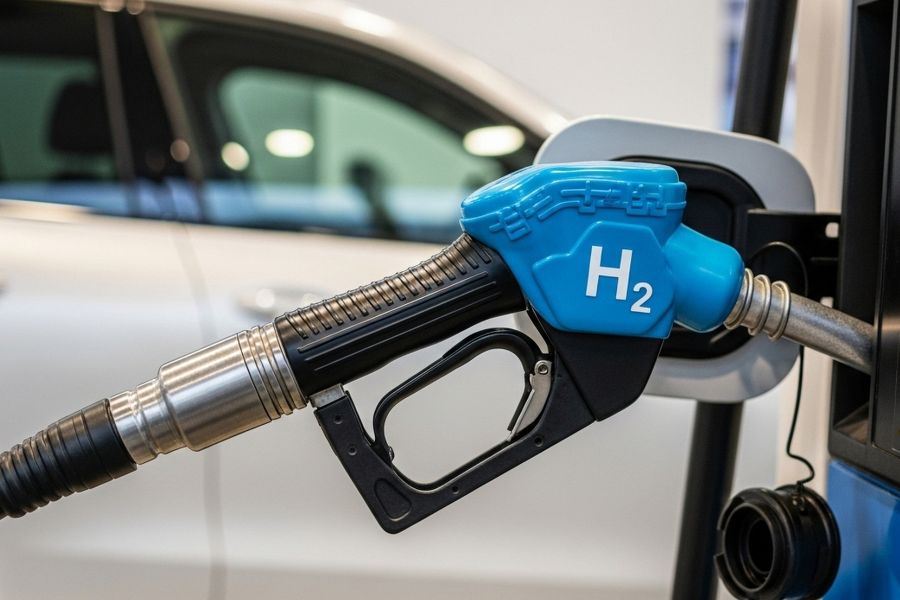Fuel cell vehicles (FC vehicles) often use hydrogen as an energy source and convert it into electrical energy in a fuel cell. This drives an electric motor – without any CO₂ emissions when driving. For companies with a sustainable focus, the use of such vehicles in the fleet can be a future-oriented solution.
How a fuel cell vehicle works
The focus is on the fuel cell, which combines hydrogen (H₂) with oxygen from the air in an electrochemical reaction to form water. This produces electrical energy that drives an electric motor. The only “exhaust” is water vapor – it could hardly be more emission-free.
Advantages for the fleet
- Emission-free operation: no CO₂, particulate matter or NOx emissions when driving
- Long range: up to 600 km and more depending on the model
- Fast refueling: hydrogen refueling only takes a few minutes – ideal for operational use
- Quiet operation: Pleasant driving experience and low noise levels
Challenges and restrictions
- Infrastructure: Still low density of hydrogen filling stations, especially outside of metropolitan areas
- Acquisition costs: High purchase price compared to combustion and battery electric vehicles
- Hydrogen production: only so-called “green hydrogen” is truly climate-neutral – its availability is limited
- Maintenance: Specialized workshops and expertise required
Application scenarios in fleet operation
Fuel cell vehicles are particularly suitable for:
- Companies with a clear focus on sustainability
- Fleets with high daily mileage
- Logistics or transport companies that benefit from fast refueling
- Municipal and commercial fleets in public transport or long-distance use
Economic consideration
Government subsidy programs, reduced operating costs and tax benefits can make their use worthwhile in the medium term – especially if the refuelling infrastructure is available in the surrounding area. Leasing offers or full-service models make it easier to get started with fuel cell technology.
Conclusion
The fuel cell vehicle is a promising alternative for companies that want to combine emission-free mobility with a long range and short service life. The technology is still in its infancy – but as the hydrogen infrastructure expands, it will also become increasingly interesting for fleet operations.

